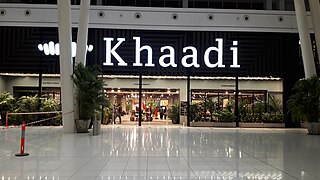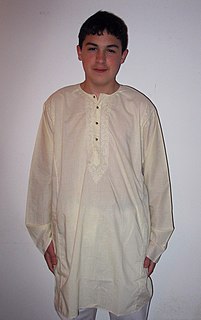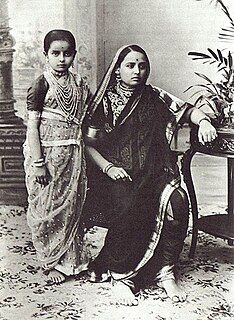 W
WAchkan also known as Baghal bandi is a knee length jacket worn by men in the Indian subcontinent much like the Angarkha.
 W
WThe term angarkha, also called angrakha, refers to a traditional upper garment worn by men in the Indian subcontinent, with origins in ancient India, which overlaps and is tied to the left or right shoulder. The angrakha was a court outfit that a person could wrap around himself, offering flexible ease with the knots and ties appropriate for wearing in the various principalities of ancient Indian subcontinent. It is worn particularly in India, Nepal, Bangladesh and in Pakistan much like the Achkan and Sherwani.
 W
WA choli is a blouse or a bodice-like upper garment that is commonly cut short leaving the midriff bare, it is worn along with a sari in the Indian subcontinent. The choli is also part of the ghagra choli costume in the Indian subcontinent.
 W
WChugha is a coat worn over clothes, usually during the cold winter months. Usually worn by men, these coats are adorned with intricate threading and come in a variety of colors and patterns. It is worn in Central Asia, including Chitral, Pakistan, Uzbekistan, Afghanistan, Tajikistan, Kazakhstan, Kyrgyzstan, India and other surrounding countries.
 W
WThe dhoti, also known as panche, dhuti, mardani, chaadra, dhotar or panchey, is a type of sarong, tied in a manner that outwardly resembles "loose trousers". It is a lower garment forming part of the national or ethnic costume for men in the Indian subcontinent. The dhoti is fashioned out of a rectangular piece of unstitched cloth, usually around 4.5 metres (15 ft) long, wrapped around the waist and the legs and knotted either in the front or the back. Dhotis come in plain or solid colours, silk dhotis with embroidered borders are considered to be formal wear. The dhoti is touted as the male counterpart of the sari worn by females to religious and secular ceremonies (functions).
 W
WFarshi Pajama is a woman's dress that was worn between early 20th centuries in Muslim courts of Oudh by royalty and ladies from privileged classes of Uttar Pradesh. Modeled after the flowing gowns worn by British noblewomen, the complete outfit consists of three basic parts – the kurta or a long shirt, the dupatta or the long stole, and the third and most important, the farshi pajama, which is a flowing two-legged skirt held by drawstrings. It falls straight to the ankles from where it starts flaring flowing copiously onto the floor. The farshi pajama in this era is often called Farshi Gharara, a term not used before the mid-20th century and is considered a distortion. The confusion is said to be because of the Farshi Pajama's similarity with the Gharara.
 W
WA Gajra is a flower garland which is worn by women in India during festive occasions, weddings or as part of everyday traditional attire. They are made usually of varies types of jasmine flowers but rose, crossandra and barleria are also widely used in gajras. It can be worn both on the bun and with the braid coiling. Women in India usually wear them with traditional attire. It is also worn on the wrist by women in India mainly during festive occasions and weddings.
 W
WA gharara is a traditional Lucknowi outfit, traditionally worn by women of the Indian subcontinent, notably Hindi Belt of modern-day India. It consists of a kurti, a dupatta (veil), and most importantly, a pair of wide-legged pants, ruched at the knee so they flare out dramatically known as Gharara. The knee area, called the gota in Urdu, is often elaborately embroidered in zari and zardozi work. Each leg of a traditional gharara is made from over 12 metres of fabric, often silk brocade.
 W
WA ghoonghat is a headcovering or headscarf, worn in the Indian subcontinent, by some married Hindu, Jain, Muslim and Sikh women to cover their heads, and often their faces. Generally aanchal or pallu, the loose end of a sari is pulled over the head and face to act as a ghunghat. A dupatta is also commonly used as a ghungat. Today, facial veiling by Hindu women as part of everyday attire is now mostly limited to the Hindi Belt region of India, particularly Haryana, Rajasthan, Uttar Pradesh, Bihar and some parts of Sindh and Punjab in Pakistan. Facial veiling is not sanctioned in Hinduism, Jainism, Buddhism, and Sikhism but some sections of the society from the 1st century B.C. advocated the use of the veil for married women, which came to be known as ghoonghat. It has been both romanticized and criticized in religious and folk literature.
 W
WIndo-Western clothing is the fusion of Western and South Asian fashion.
 W
WInternational Nepali Topi Day is an event celebrated by Nepali people globally on 1 January of English Calendar wearing Dhaka or Bhaad-gaaule Topi as their pride. All Nepali people wear Dhaka topi and Bhaad-gaaule topi on that day.
 W
WThe term jama refers to a long coat which was popular in South Asia during the Mughal period.
 W
WThe Kandahari cap also known as Sindhi cap or topi is a skullcap worn predominantly by the Pashtun people in southern, southeast and western Afghanistan, as well as by the Baloch and Sindhi people of Sindh and Balochistan. In Afghanistan the Kandahari cap alone is usually only worn by younger Pashtun boys, when a man gets married, a turban is usually wrapped around the cap.
 W
WKashmiri handicrafts is a traditional art of Kashmiri people and artisans who make, craft, and decorate objects by hand. Srinagar, Ganderbal, and Budgam are the main districts in central Kashmir which are making handicrafts products since ages. The rest of its districts, including Srinagar, Ganderbal, and Budgam are best known for its cultural heritage which extends handicraft industry in the state of Jammu and Kashmir, India.
 W
WKhaadi is a Pakistani fashion and lifestyle brand founded in December 1998. It operates 52 stores, in 17 cities across Pakistan, 22 stores across UK and various stores all over the world including flagship largest store out of Pakistan in Mirdiff City Center in Dubai.
 W
WKhadi, also called khaddar, is a hand-woven natural fibre cloth originating from eastern regions of the Indian subcontinent, but is now broadly used throughout India, Pakistan and Bangladesh.
 W
WA khalat, also known as khelat, is a loose, long-sleeved outer silk or cotton robe common in Central Asia and South Asia and worn both by men and women, although in differing styles.
 W
WThe traditional clothing worn in Khyber Pakhtunkhwa varies according to the area of the region. The following outfits are generally worn in the area.
 W
WA kurta is a loose collarless shirt worn in many regions of South Asia, and now also worn around the world. Tracing its roots to Central Asian nomadic tunics, or upper body garments, of the late-ancient- or early-medieval era, the kurta has evolved stylistically over the centuries, especially in the Indian subcontinent, as a garment for everyday wear as well as for formal occasions.
 W
WA lehenga-style sari is a modern garment introduced in India that blends elements of the traditional sari and lehenga choli. A lehenga-style sari is normally 4.5 metres to 5.5 metres long. To wear one, unlike a sari, one does not have to form pleats but may simply tuck and drape.
 W
WPakol,
 W
WThe Punjabi ghagra is a four-piece outfit known as tewar or 'ti-or' which was traditionally worn by Punjabi women throughout the Punjab region with the outfit comprising a head scarf (Phulkari), kurta or kurti, ghagra and either a suthan or the Punjabi salwar. In modern times, the ghagra is worn by women in parts of Haryana, rural parts of south West Punjab, parts of Himachal Pradesh and during performances of Giddha in East Punjab.
 W
WPunjabi Kurta and Tamba are traditional costume for men of Punjab.
 W
WSadri, also known as a Waskat or Bandi, is a vest-jacket worn by men in South Asia, while women sometimes wear a similar waistcoat known as a Koti. In Europe and America, the sadri became known as a Nehru vest.
 W
WThe Punjabi Salwar is part of the Punjabi suit which is the traditional attire of the Punjab region of the Indian subcontinent. It is known for its lively hues, rich fabrics, and embroidery. The suit features three items - a kameez (top), salwar (bottom) and dupatta (scarf). The women's Punjabi salwar suit style has become popular all over the sub-continent and beyond reaching even the remote parts of Ladakh. It is also the national dress of Pakistan, since the later 1960s with the Punjabi salwar being used in government offices.
 W
WA sari is a women's garment from the Indian subcontinent that consists of an unstitched drape varying from 4.5 to 9 metres in length and 600 to 1,200 millimetres in breadth that is typically wrapped around the waist, with one end draped over the shoulder, partly baring the midriff. It is traditionally worn in the countries of India, Pakistan, Bangladesh, Sri Lanka and Nepal. There are various styles of sari manufacture and draping, the most common being the Nivi style The sari is worn with a fitted bodice commonly called a choli and a petticoat called ghagra, parkar, or ul-pavadai. In the modern Indian subcontinent, the sari is considered a cultural icon.
 W
WShalwar kameez is a traditional combination dress worn by women, and in some regions by men, in South Asia, and Central Asia.
 W
WSherwani is a long coat-like garment worn in the Indian subcontinent, very similar to a Western frock coat or a Polish and Lithuanian żupan. Originally introduced by Kushans of India in third A.D., it is also associated with Muslim aristocracy during the period of British rule, it is worn over a kurta with the combination of either a churidar, a dhoti, a pajama, or a shalwar/sirwal as the lower-body clothing. It can be distinguished from the achkan by the fact that it is shorter in length, is often made from heavier suiting fabrics, and by the presence of a lining. Sherwani is worn on formal occasions.
 W
WZari is an even thread traditionally made of fine gold or silver used in traditional Indian, Bangladeshi and Pakistani garments, especially as brocade in saris etc. This thread is woven into fabrics, primarily of silk, to make intricate patterns and elaborate designs of embroidery called zardozi. Zari was popularised during the Moghul era, the port of Surat was linked to the Meccan pilgrimage route which served as a major factor for re-introducing this ancient craft in India. During the Vedic ages, the gold embroidery was associated with the grandeur and regal attire of gods, kings, and literary figures (gurus){as shown in the movies}.